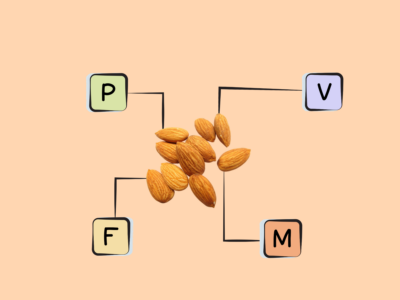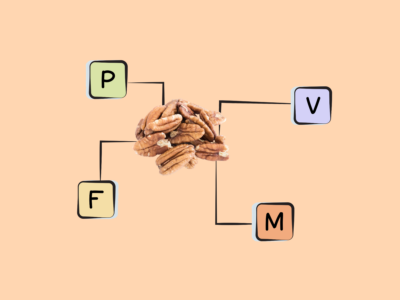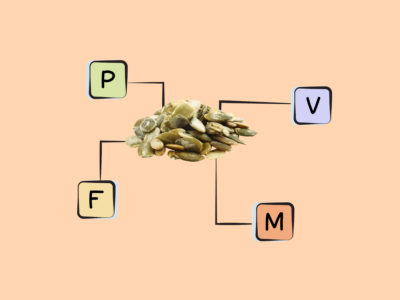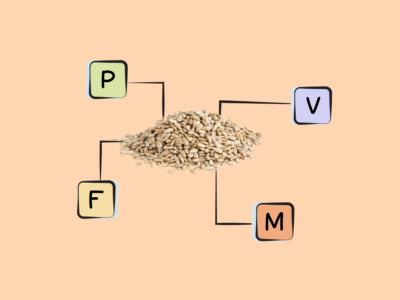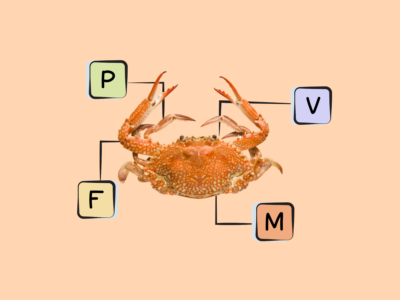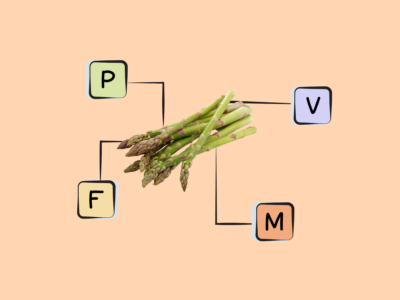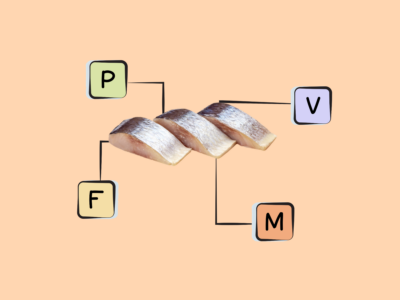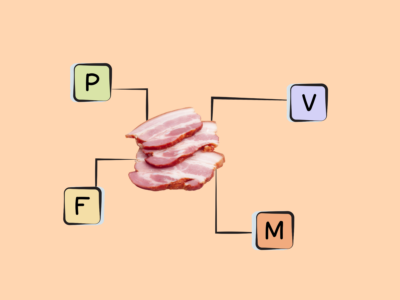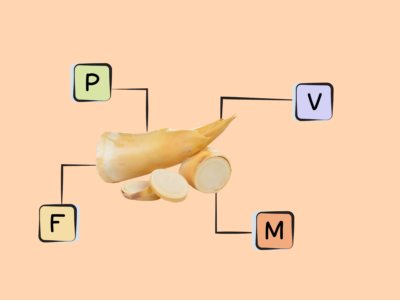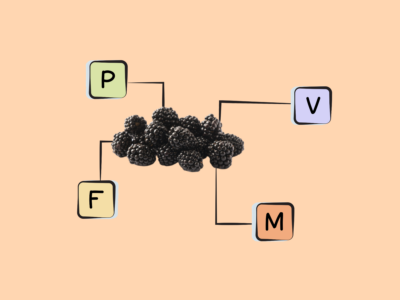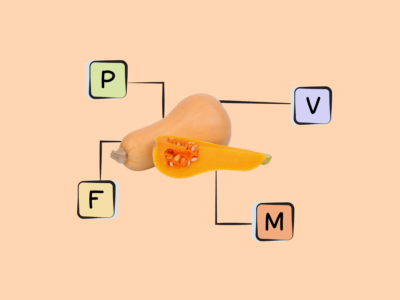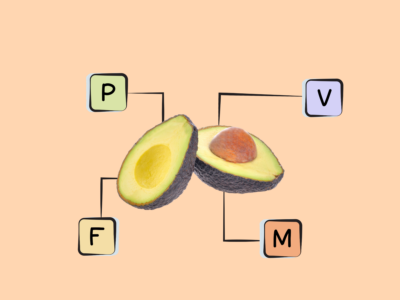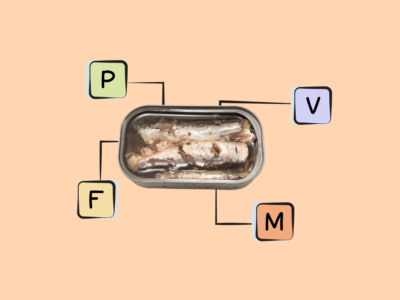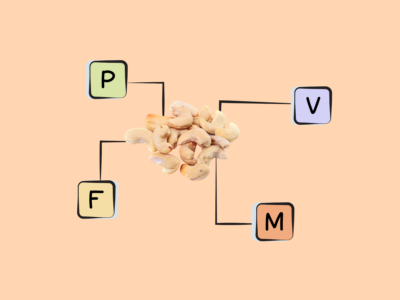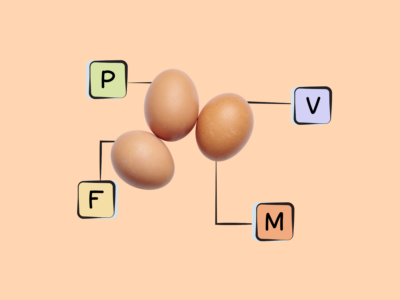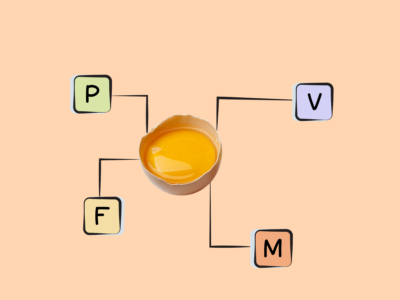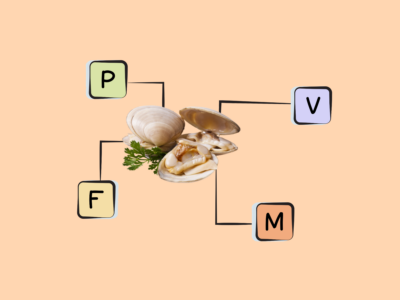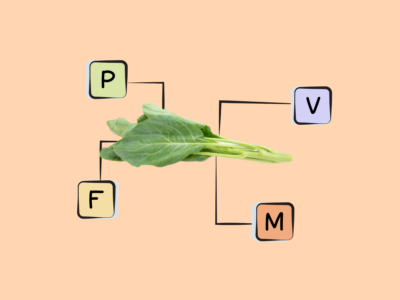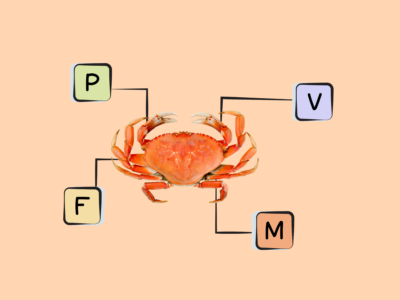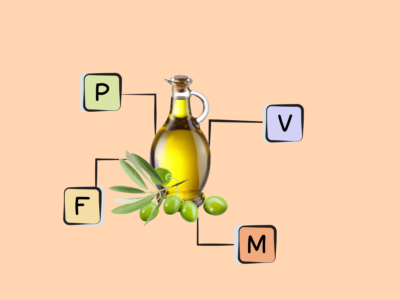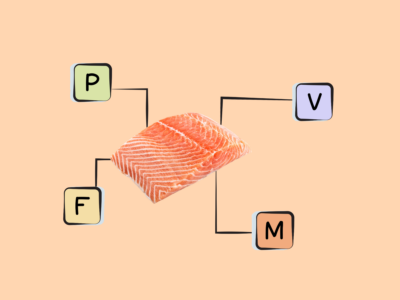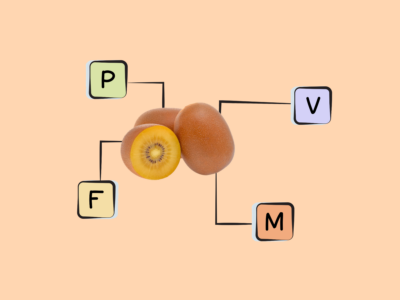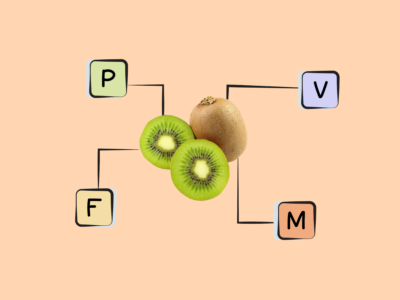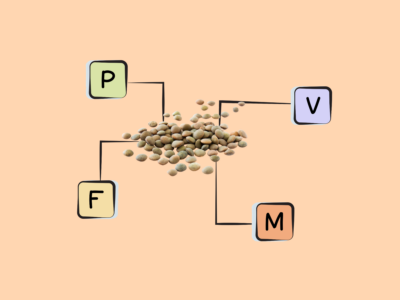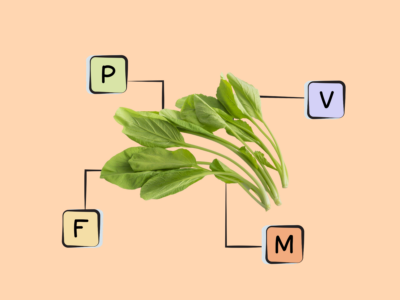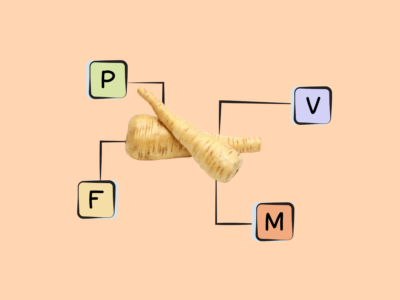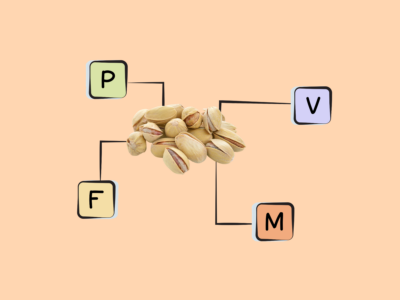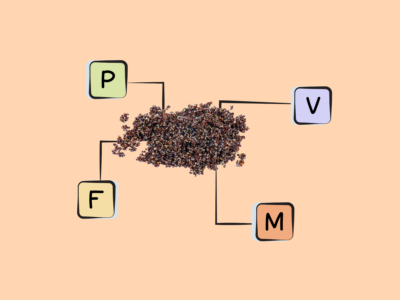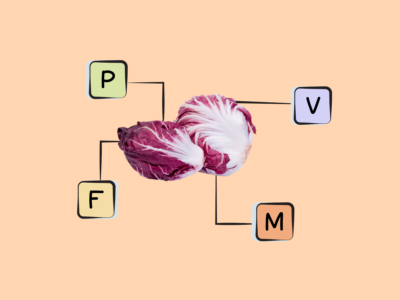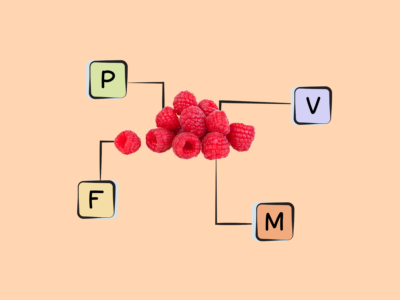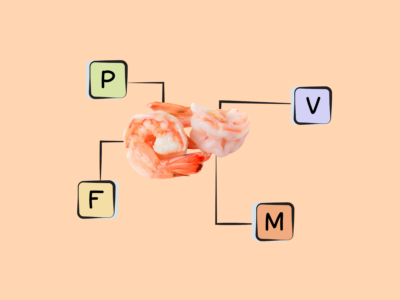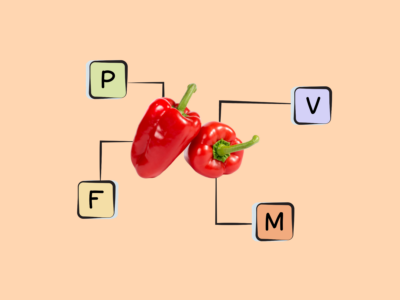Key Takeaways (expand)
- Vitamin E is actually a group of eight fat-soluble vitamins (four tocopherols and four tocotrienols), although alpha-tocopherol is the most significant for human health.
- Vitamin E serves as an important antioxidant, scavenging free radicals and protecting the fats in cell membranes from oxidative damage.
- During pregnancy, vitamin E plays an essential role in embryo development, blood circulation in the placenta, and the prevention of complications involving oxidative stress (in fact, vitamin E requirements go up significantly during pregnancy due to increased metabolic demands!).
- High vitamin E intake has been linked with better cardiovascular health—including a reduction in heart disease risk, lower incidence of heart attacks, and a lower risk of blood clots forming in the veins.
- Some forms of vitamin E may also be cancer-protective (reducing proliferation and inducing apoptosis of cancer cells), and could even increase the potency of chemotherapy drugs.
- Vitamin E may help fight the progression of neurological disorders like Alzheimer’s disease, delaying cognitive decline and increasing survival time.
- Vitamin E impacts some aspects of the immune system. Consuming adequate amounts may help reduce the risk of the common cold (as well as other upper respiratory tract infections), and has been shown to help combat age-related declines in immune function.
- Vitamin E can help protect against some forms of retinopathy (when blood vessels in the eye’s retina get damaged), due to its ability to scavenge free radicals and improve blood flow to the retina.
- Although true vitamin E deficiency is rare, it can be caused by certain genetic mutations, health conditions that impair fat absorption, or premature birth, and leads to nerve problems and retina damage.
- The best sources of vitamin E are nuts and seeds (especially almonds, sunflower seeds, and hazelnuts); it’s also found in other oily plant foods like olives and avocadoes.
Table of Contents[Hide][Show]
What we call vitamin E is actually a group of eight fat-soluble vitamins, including four tocopherols (alpha-tocopherol, beta-tocopherol, gamma-tocopherol, and delta-tocopherol) and four tocotrienols (alpha-tocotrienol, beta-tocotrienol, gamma-tocotrienol, and delta-tocotrienol). Although gamma-tocopherol is the most widely consumed form of vitamin E in many parts of the world (especially those where seed oils are a mainstay), alpha-tocopherol is the most biologically relevant: it’s what the body preferentially uses, is the slowest to get metabolized and excreted (leading to higher concentrations in the blood and tissues), and is also the only form of this nutrient that can reverse the symptoms of vitamin E deficiency!
Vitamin E was first discovered in 1922, when a scientist named Herbert McLean Evans was conducting feeding experiments on rats. He found that despite being fed every nutrient known at the time, the rats were infertile until wheat germ (which we now know is rich in vitamin E) was added to their diets. By 1936, vitamin E was isolated and given the name “tocopherol”—derived from the Greek words tókos (meaning “birth”) and phérein (meaning “to bear or carry”), referring to the vitamin’s initial discovery as a fertility factor that allowed rats to carry a pregnancy.
Vitamin E is found most abundantly in nuts and seeds, particularly sunflower seeds, almonds, and hazelnuts. It’s also found in other oily plant foods like avocados and olives (as well as their oils), palm oil, vegetable oils, fatty fish, organ meats, tomatoes, corn, asparagus, oats, wheat germ, wheat germ oil, peanuts, chestnuts, coconut, kiwis, and carrots. Some foods are also fortified with vitamin E, such as certain breakfast cereals. Many multivitamins contain vitamin E, too—particularly in the synthetic form of dl-alpha tocopherol.
The Biological Roles of Vitamin E
The most important role of vitamin E is in serving as a fat-soluble antioxidant, intercepting free radicals and protecting the fats in cell membranes from oxidative damage. Vitamin E guards the fats in LDL cholesterol particles against oxidation, too, which is a boon for cardiovascular health (since oxidized LDL has been implicated in heart disease, due to readily moving into arterial walls and contributing to plaque formation). As a downstream effect of its antioxidant properties, vitamin E (especially alpha-tocopherol) may also impact-cell mediated immunity—including influencing the activity of cell membrane enzymes and proteins, and improving the formation of an adhesive junction called the immune synapse between antigen-presenting cells and naïve T lymphocytes, in turn prompting the activation and proliferation of T cells. After a molecule of vitamin E neutralizes a free radical and loses its antioxidant abilities, other antioxidants (such as vitamin C) can regenerate vitamin E’s antioxidant capacity!
Meanwhile, gamma-tocopherol and all four tocotrienols appear to be even better free radical scavengers than alpha-tocopherol, and may have additional effects due to behaving as signaling molecules—particularly when it comes to inflammation. Studies have found that gamma-tocopherol inhibits cyclooxygenase activity, and along with delta-tocopherol and gamma-tocotrienol, suppresses proinflammatory signaling pathways (such as NF-κB and STAT) and inhibits the formation of some inflammatory eicosanoids. But, because these forms of vitamin E have much lower binding capacity by the alpha-tocopherol transfer protein in the liver, they’re more rapidly excreted and have less of a chance to work their magic in the body. So, more research is needed in humans (versus in vitro experiments) to help understand how these mechanisms play out.
And, the role of vitamin E in reproduction extends beyond rat fertility: this nutrient appears particularly important during human pregnancy, with some studies showing that low serum levels of alpha-tocopherol during the first trimester are associated with increased risk of miscarrying. Interestingly, levels of alpha-tocopherol in the body naturally increase to about 150% of their normal amounts during pregnancy—likely due to the importance of this nutrient in embryo development, blood circulation (including circulation in the placenta), and protecting against pregnancy complications involving oxidative stress. Because pregnant people have increased metabolic rates (and therefore increased free radical production and lipid peroxidation), the antioxidant activity of vitamin E is particularly valuable during pregnancy.
Vitamin E also serves a role in skin health. In fact, it’s the most abundant fat-soluble antioxidant in the skin. Sebum (the waxy oil produced by the skin’s sebaceous glands) naturally contains vitamin E, which in turn protects the skin by absorbing ultraviolet (UV) light, preventing UV-related free radical damage (as well as other forms of oxidative damage), and reducing local inflammation. This is why the use of vitamin E is common in many dermatological products and topical skin creams—as well as why people with oily skin have better protection against sun damage!
Everything You Need to Jump into Nutrivore TODAY!

Nutrivore Quickstart Guide
The Nutrivore Quickstart Guide e-book explains why and how to eat a Nutrivore diet, introduces the Nutrivore Score, gives a comprehensive tour of the full range of essential and important nutrients!
Plus, you’ll find the Top 100 Nutrivore Score Foods, analysis of food groups, practical tips to increase the nutrient density of your diet, and look-up tables for the Nutrivore Score of over 700 foods.
Buy now for instant digital access.
Vitamin E in Health and Disease
Observational studies have linked higher dietary intake of vitamin E and vitamin E supplementation with reduced rates of cardiovascular disease, cancer, and dementia, though the results of clinical trials are far less consistent. But, different forms of vitamin E may have their own specific effects here.
Vitamin E and Cancer
Human and animal studies suggest that higher levels of gamma-tocopherol in the blood may reduce the risk of prostate cancer. And in vitro, tocotrienols (especially delta-tocotrienol) appear to have greater anti-cancer properties than tocopherols, reducing proliferation and inducing cell death in malignant cell lines—largely by regulating caspase-independent pathways of apoptosis.
When combined with chemotherapy agents, these vitamin E isomers also have a synergistic effect against cancer progression, making the chemotherapy agents more potent. However, due to their lower bioavailability, it’s hard to say how the observed effects of these vitamin E forms translate to disease risk in humans.
Vitamin E and Cardiovascular Disease
In general, the protective effects of vitamin E on cardiovascular health seem to occur at levels significantly higher than average dietary intakes.
Several large observational studies have shown a significant reduction in heart disease risk only for participants consuming at least 67 mg daily of supplemental alpha-tocopherol, and intervention studies have found that in older women, supplementing with 400 mg of alpha-tocopherol every other day for 10 years led to a 49% reduction in cardiovascular-related deaths, a 34% reduction in non-fatal heart attacks, and 26% lower risk of venous thromboembolism (blood clots that form in the veins). Other intervention studies have shown that supplementation with 180 or 360 mg of alpha-tocopherol reduced the occurrence of nonfatal heart attacks by 77%. And, randomized controlled studies show that giving 500 mg of gamma-tocopherol to smokers enhances the vascular endothelial function improvements that happen when they quit smoking—largely by decreasing a vasoconstrictor called 8-iso-15(S)-prostaglandin F2α.
There’s also some evidence that vitamin E in the form of tocotrienols could help reduce cholesterol levels in the blood.
Vitamin E and Alzheimer’s Disease
Some (but not all) clinical studies have also shown a protective effect of this micronutrient on cognitive and neurodegenerative disorders.
In studies of Alzheimer’s patients, two years of supplementing with vitamin E helped slow disease progression, delay cognitive decline, delay functional decline (as measured by the ability to perform basic daily living activities), and reduced the annual mortality rate—leading to an increase overall survival time. In general, these benefits appear dependent on vitamin E’s ability to reduce oxidative stress.
Vitamin E and Immune Health
Due to its influence on some aspects of the immune system, vitamin E (particularly alpha-tocopherol) may help combat age-related declines in immune function, including impaired T cell response.
In trials of older adults, vitamin E supplementation (equivalent to 100 mg of naturally occurring alpha-tocopherol, for a span of three months) was able to significantly improve neutrophil chemotaxis, natural killer cytotoxic activity, and phagocytic response, while also enhancing interleukin-2 production and mitogen-induced lymphocyte proliferation relative to the subjects’ baseline. Also in older adults, the same vitamin E dose (this time given for 235 days) improved T lymphocyte-mediated immunity and enhanced antibody production in response to tetanus and hepatitis B vaccines. (This is great news, because antibody response to immunization tends to decrease with age, and these results show that vitamin E could help support greater vaccine efficacy in this age group!)
Additional research shows that vitamin E supplementation can significantly reduce the risk of getting an upper respiratory tract infection like the common cold, although there doesn’t seem to be a protective effect against lung infections.
Vitamin E and Eye Health
Additionally, vitamin E may help prevent certain eye-related health conditions. For example, vitamin E has been shown to protect against different forms of retinopathy—including diabetic retinopathy (a condition where high blood sugar levels damage the retina), and retinopathy of prematurity (a condition where blood vessels form abnormally in the retinas of premature infants). This appears to be due to vitamin E’s ability to improve blood flow to the retina and scavenge free radicals produced in hypoxic conditions, such as during premature birth.
And although the evidence has been mixed, some studies have shown that dietary vitamin E, supplemental vitamin E, and high blood levels of vitamin E are all associated with lower risk of age-related cataracts.
Some research has also been conducted on vitamin E and age-related macular degeneration, but the results of trials generally haven’t shown any significant preventative effect—other than some evidence that vitamin E might help reduce the progression from moderate to advanced macular degeneration in people already suffering from the disease.
Didn’t know vitamin E was this amazing? Maybe your friends will enjoy this too!
Health Effects of Vitamin E Deficiency
True vitamin E deficiency is relatively rare, and typically happens due to genetic abnormalities affecting vitamin E transport (such as mutations in the TTPA gene, which causes a disorder called “ataxia with vitamin E deficiency) or underlying problems with fat digestion or bile secretion (such as cholestasis, cystic fibrosis, primary biliary cirrhosis, Crohn’s disease, liver disease, pancreatic insufficiency, or abetalipoproteinemia—a rare inherited disorder of fat malabsorption).
Premature infants can also be at higher risk of vitamin E deficiency. When vitamin E deficiency does occur, it can cause peripheral neuropathy and other nerve problems (including loss of balance and coordination), muscle weakness, impairment of reflexes, decreased pain sensitivity or sense of touch, speech difficulties, and retina damage in the eye that can eventually cause blindness.
In pregnant women, vitamin E deficiency can lead to placental abruption (where the placenta separates from the uterus wall before birth), placental aging, vascular endothelial injury, miscarriage, premature birth, and greater incidence of hypertensive disorders of pregnancy (chronic hypertension, gestational hypertension, preeclampsia-eclampsia, and chronic hypertension with superimposed preeclampsia).
Vitamin E insufficiency, in contrast to true deficiency, is much more widespread—with the median dietary intake worldwide being only 6.2 mg per day of alpha-tocopherol, and over 90% of Americans failing to meet the estimated average requirement (EAR) of 12 mg per day. (The EAR is the amount expected to be sufficient for 50% of individuals, whereas the RDA is expected to be sufficient for 97-98% of individuals). Mild vitamin E insufficiency may not cause any overt symptoms, though it can potentially pose long-term consequences for fertility and immunity.
Nutrivore Is a Game-Changer—This FREE Guide Shows You Why
Sign up for the free Nutrivore Newsletter, your weekly, science-backed guide to improving health through nutrient-rich foods — without dieting harder —and get the Beginner’s Guide to Nutrivore delivered straight to your inbox!

Problems From Too Much Vitamin E
While normal intakes of vitamin E are very safe, ingesting excessive amounts can cause unwanted side effects. For example, high doses of vitamin E can increase the risk of bleeding problems, due to vitamin E’s activity as an anticoagulant (it can also interfere with vitamin K-dependent blood clotting activities). So, along with being contraindicated for people with bleeding disorders, high-dose vitamin E supplementation carries a risk of interactions with anticoagulant drugs (such as warfarin), antiplatelet drugs, non-steroidal anti-inflammatory drugs, and even certain other supplements like fish oil. As a result, many health agencies consider 1,000 mg (or 15,000 IU) of vitamin E to be a tolerable upper intake level. Be sure to consult your healthcare provider for medical advice before embarking on any high-dose vitamin E supplement regimen, especially if you have a bleeding disorder or take medications that pose an interaction risk.
Additionally, a handful of studies have found potential risks associated with high-dose vitamin E among specific populations—including an association of vitamin E and lung cancer in current smokers (an 11% increase in lung cancer risk for every additional 100 mg of daily vitamin E), a potential increased risk of hemorrhagic stroke in middle-aged men supplementing with alpha-tocopherol, and an increased risk of prostate cancer specifically among people with low selenium status. It’s also worth noting that most studies evaluating high-dose vitamin E intake for toxicity have only lasted a few weeks or months, and many of the long-term effects are still relatively unknown.
Intriguingly, high-dose supplementation with alpha-tocopherol has been shown to deplete levels of gamma-tocopherol in the blood and tissues, whereas supplementation with gamma-tocopherol increases levels of both of these vitamin E forms within the body. More research is needed to fully understand the effects of different vitamin E isomers both independently and interactively!
How Much Vitamin E Do We Need?
The recommended dietary allowance (RDA) for vitamin E is 15 mg per day for adolescents and adults, including during pregnancy; while breastfeeding, the RDA for vitamin E increases to 19 mg daily. However, these numbers come largely from decades-old studies that were focused on the prevention of deficiency symptoms rather than optimizing health, so higher amounts of vitamin E may be necessary for reaping this vitamin’s full spectrum of rewards!
Like the other fat-soluble vitamins (vitamin D, vitamin A, and vitamin K), intestinal absorption of vitamin E is highest in the context of a fat-containing meal. And, it’s worth noting that the FDA doesn’t require vitamin E content to be listed on foods, unless it’s been intentionally added—so reading nutrition labels isn’t an accurate way to gauge your intake!
| 0 – 6 months | |||||
| 6 months to < 12 months | |||||
| 1 yr – 3 yrs | |||||
| 4 yrs – 8 yrs | |||||
| 9 yrs – 13 yrs | |||||
| 14 yrs – 18 yrs | |||||
| 19 yrs – 50 yrs | |||||
| 51+ yrs | |||||
| Pregnant (14 – 18 yrs) | |||||
| Pregnant (19 – 30 yrs) | |||||
| Pregnant (31 – 50 yrs) | |||||
| Lactating (14 – 18 yrs) | |||||
| Lactating (19 – 30 yrs) | |||||
| Lactating (31 – 50 yrs) |
Nutrient Daily Values
Nutrition requirements and recommended nutrient intake for infants, children, adolescents, adults, mature adults, and pregnant and lactating individuals.
Want to know the top 25 foods for this awesome nutrient?

The Top 25 Foods for Every Nutrient
The Top 25 Foods for Every Nutrient e-book is a well-organized, easy-to-use, grocery store-friendly guide to help you choose foods that fit your needs of 43 important nutrients while creating a balanced nutrient-dense diet.
Get two “Top 25” food lists for each nutrient, plus you’ll find RDA charts for everyone, informative visuals, fun facts, serving sizes and the 58 foods that are Nutrient Super Stars!
Buy now for instant digital access.
Best Food Sources of Vitamin E
The following foods have high concentrations of vitamin E, containing at least 50% of the recommended dietary allowance per serving, making them our best food sources of this valuable antioxidant vitamin!
Want to know the top 500 most nutrient-dense foods?
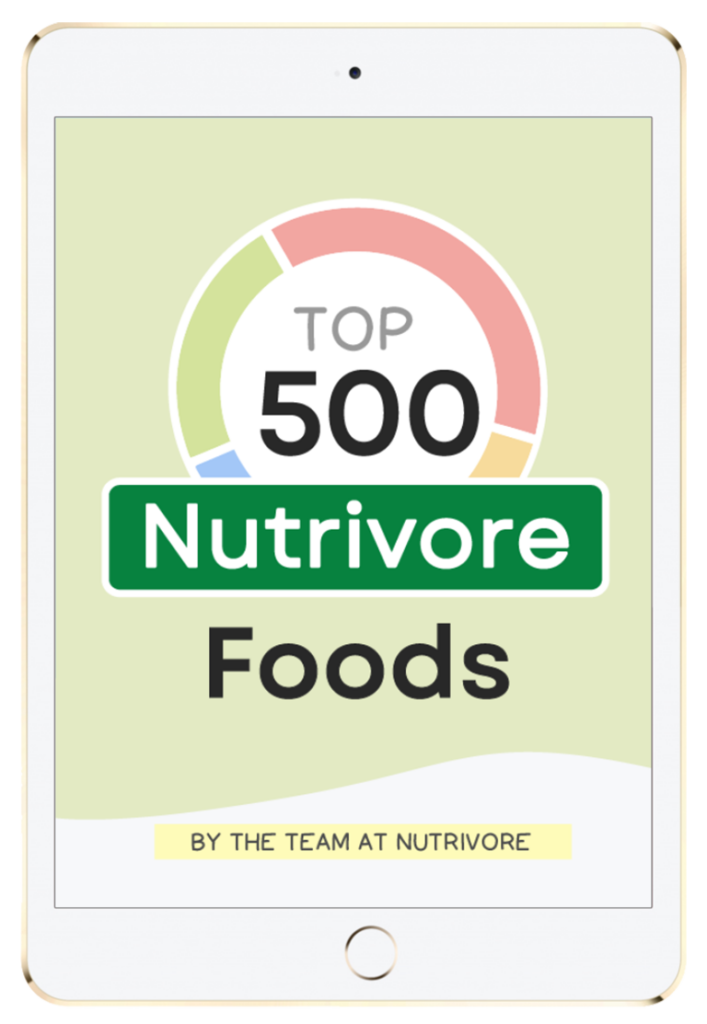
Top 500 Nutrivore Foods
The Top 500 Nutrivore Foods e-book is an amazing reference deck of the top 500 most nutrient-dense foods according to their Nutrivore Score. Think of it as the go-to resource for a super-nerd, to learn more and better understand which foods stand out, and why!
If you are looking for a quick-reference guide to help enhance your diet with nutrients, and dive into the details of your favorite foods, this book is your one-stop-shop!
Buy now for instant digital access.
Good Food Sources of Vitamin E
The following foods are also excellent or good sources of vitamin E, containing at least 10% (and up to 50%) of the daily value per serving.

Checklists and Planning Tools
Make Nutrivore simple and easy with these handy-dandy planning tools and checklists.
Citations
Expand to see all scientific references for this article.
Ahsan H, Ahad A, Iqbal J, Siddiqui WA. Pharmacological potential of tocotrienols: a review. Nutr Metab (Lond). 2014 Nov 12;11(1):52. doi: 10.1186/1743-7075-11-52.
Berson EL, Rosner B, Sandberg MA, Hayes KC, Nicholson BW, Weigel-DiFranco C, Willett W. A randomized trial of vitamin A and vitamin E supplementation for retinitis pigmentosa. Arch Ophthalmol. 1993 Jun;111(6):761-72. doi: 10.1001/archopht.1993.01090060049022.
Booth SL, Golly I, Sacheck JM, Roubenoff R, Dallal GE, Hamada K, Blumberg JB. Effect of vitamin E supplementation on vitamin K status in adults with normal coagulation status. Am J Clin Nutr. 2004 Jul;80(1):143-8. doi: 10.1093/ajcn/80.1.143.
Bursell SE, Clermont AC, Aiello LP, Aiello LM, Schlossman DK, Feener EP, Laffel L, King GL. High-dose vitamin E supplementation normalizes retinal blood flow and creatinine clearance in patients with type 1 diabetes. Diabetes Care. 1999 Aug;22(8):1245-51. doi: 10.2337/diacare.22.8.1245.
Chen H, Qian N, Yan L, Jiang H. Role of serum vitamin A and E in pregnancy. Exp Ther Med. 2018 Dec;16(6):5185-5189. doi: 10.3892/etm.2018.6830.
Constantinou C, Papas A, Constantinou AI. Vitamin E and cancer: An insight into the anticancer activities of vitamin E isomers and analogs. Int J Cancer. 2008 Aug 15;123(4):739-52. doi: 10.1002/ijc.23689.
De la Fuente M, Hernanz A, Guayerbas N, Victor VM, Arnalich F. Vitamin E ingestion improves several immune functions in elderly men and women. Free Radic Res. 2008 Mar;42(3):272-80. doi: 10.1080/10715760801898838.
Fan Y, Adam TJ, McEwan R, Pakhomov SV, Melton GB, Zhang R. Detecting Signals of Interactions Between Warfarin and Dietary Supplements in Electronic Health Records. Stud Health Technol Inform. 2017;245:370-374.
Glynn RJ, Ridker PM, Goldhaber SZ, Zee RY, Buring JE. Effects of random allocation to vitamin E supplementation on the occurrence of venous thromboembolism: report from the Women’s Health Study. Circulation. 2007 Sep 25;116(13):1497-503. doi: 10.1161/CIRCULATIONAHA.107.716407.
Ho JI, Ng EY, Chiew Y, Koay YY, Chuar PF, Phang SCW, Ahmad B, Kadir KA. The effects of vitamin E on non-proliferative diabetic retinopathy in type 2 diabetes mellitus: Are they sustainable with 12 months of therapy. SAGE Open Med. 2022 May 26;10:20503121221095324. doi: 10.1177/20503121221095324.
Jiang Q, Christen S, Shigenaga MK, Ames BN. gamma-tocopherol, the major form of vitamin E in the US diet, deserves more attention. Am J Clin Nutr. 2001 Dec;74(6):714-22. doi: 10.1093/ajcn/74.6.714.
Jiang Q. Natural forms of vitamin E: metabolism, antioxidant, and anti-inflammatory activities and their role in disease prevention and therapy. Free Radic Biol Med. 2014 Jul;72:76-90. doi: 10.1016/j.freeradbiomed.2014.03.035.
Kang JH, Cook N, Manson J, Buring JE, Grodstein F. A randomized trial of vitamin E supplementation and cognitive function in women. Arch Intern Med. 2006 Dec 11-25;166(22):2462-8. doi: 10.1001/archinte.166.22.2462.
Kontush K, Schekatolina S. Vitamin E in neurodegenerative disorders: Alzheimer’s disease. Ann N Y Acad Sci. 2004 Dec;1031:249-62. doi: 10.1196/annals.1331.025.
Kushi LH, Folsom AR, Prineas RJ, Mink PJ, Wu Y, Bostick RM. Dietary antioxidant vitamins and death from coronary heart disease in postmenopausal women. N Engl J Med. 1996 May 2;334(18):1156-62. doi: 10.1056/NEJM199605023341803.
Lavine JE, Schwimmer JB, Van Natta ML, Molleston JP, Murray KF, Rosenthal P, Abrams SH, Scheimann AO, Sanyal AJ, Chalasani N, Tonascia J, Ünalp A, Clark JM, Brunt EM, Kleiner DE, Hoofnagle JH, Robuck PR; Nonalcoholic Steatohepatitis Clinical Research Network. Effect of vitamin E or metformin for treatment of nonalcoholic fatty liver disease in children and adolescents: the TONIC randomized controlled trial. JAMA. 2011 Apr 27;305(16):1659-68. doi: 10.1001/jama.2011.520.
Lee IM, Cook NR, Gaziano JM, Gordon D, Ridker PM, Manson JE, Hennekens CH, Buring JE. Vitamin E in the primary prevention of cardiovascular disease and cancer: the Women’s Health Study: a randomized controlled trial. JAMA. 2005 Jul 6;294(1):56-65. doi: 10.1001/jama.294.1.56.
Leonard SW, Bruno RS, Ramakrishnan R, Bray T, Traber MG. Cigarette smoking increases human vitamin E requirements as estimated by plasma deuterium-labeled CEHC. Ann N Y Acad Sci. 2004 Dec;1031:357-60. doi: 10.1196/annals.1331.044.
Lopes da Silva S, Vellas B, Elemans S, Luchsinger J, Kamphuis P, Yaffe K, Sijben J, Groenendijk M, Stijnen T. Plasma nutrient status of patients with Alzheimer’s disease: Systematic review and meta-analysis. Alzheimers Dement. 2014 Jul;10(4):485-502. doi: 10.1016/j.jalz.2013.05.1771.
Mah E, Pei R, Guo Y, Ballard KD, Barker T, Rogers VE, Parker BA, Taylor AW, Traber MG, Volek JS, Bruno RS. γ-Tocopherol-rich supplementation additively improves vascular endothelial function during smoking cessation. Free Radic Biol Med. 2013 Dec;65:1291-1299. doi: 10.1016/j.freeradbiomed.2013.09.016.
Mah E, Pei R, Guo Y, Masterjohn C, Ballard KD, Taylor BA, Taylor AW, Traber MG, Volek JS, Bruno RS. Greater γ-tocopherol status during acute smoking abstinence with nicotine replacement therapy improved vascular endothelial function by decreasing 8-iso-15(S)-prostaglandin F2α. Exp Biol Med (Maywood). 2015 Apr;240(4):527-33. doi: 10.1177/1535370214556948.
Meydani SN, Meydani M, Blumberg JB, Leka LS, Siber G, Loszewski R, Thompson C, Pedrosa MC, Diamond RD, Stollar BD. Vitamin E supplementation and in vivo immune response in healthy elderly subjects. A randomized controlled trial. JAMA. 1997 May 7;277(17):1380-6. doi: 10.1001/jama.1997.03540410058031.
Pastori D, Carnevale R, Cangemi R, Saliola M, Nocella C, Bartimoccia S, Vicario T, Farcomeni A, Violi F, Pignatelli P. Vitamin E serum levels and bleeding risk in patients receiving oral anticoagulant therapy: a retrospective cohort study. J Am Heart Assoc. 2013 Oct 28;2(6):e000364. doi: 10.1161/JAHA.113.000364.
Pazdro R, Burgess JR. The role of vitamin E and oxidative stress in diabetes complications. Mech Ageing Dev. 2010 Apr;131(4):276-86. doi: 10.1016/j.mad.2010.03.005.
Rimm EB, Stampfer MJ, Ascherio A, Giovannucci E, Colditz GA, Willett WC. Vitamin E consumption and the risk of coronary heart disease in men. N Engl J Med. 1993 May 20;328(20):1450-6. doi: 10.1056/NEJM199305203282004.
Sano M, Ernesto C, Thomas RG, Klauber MR, Schafer K, Grundman M, Woodbury P, Growdon J, Cotman CW, Pfeiffer E, Schneider LS, Thal LJ. A controlled trial of selegiline, alpha-tocopherol, or both as treatment for Alzheimer’s disease. The Alzheimer’s Disease Cooperative Study. N Engl J Med. 1997 Apr 24;336(17):1216-22. doi: 10.1056/NEJM199704243361704.
Sanyal AJ, Chalasani N, Kowdley KV, McCullough A, Diehl AM, Bass NM, Neuschwander-Tetri BA, Lavine JE, Tonascia J, Unalp A, Van Natta M, Clark J, Brunt EM, Kleiner DE, Hoofnagle JH, Robuck PR; NASH CRN. Pioglitazone, vitamin E, or placebo for nonalcoholic steatohepatitis. N Engl J Med. 2010 May 6;362(18):1675-85. doi: 10.1056/NEJMoa0907929.
Sesso HD, Buring JE, Christen WG, Kurth T, Belanger C, MacFadyen J, Bubes V, Manson JE, Glynn RJ, Gaziano JM. Vitamins E and C in the prevention of cardiovascular disease in men: the Physicians’ Health Study II randomized controlled trial. JAMA. 2008 Nov 12;300(18):2123-33. doi: 10.1001/jama.2008.600.
Shamim AA, Schulze K, Merrill RD, Kabir A, Christian P, Shaikh S, Wu L, Ali H, Labrique AB, Mehra S, Klemm RD, Rashid M, Sungpuag P, Udomkesmalee E, West KP Jr. First-trimester plasma tocopherols are associated with risk of miscarriage in rural Bangladesh. Am J Clin Nutr. 2015 Feb;101(2):294-301. doi: 10.3945/ajcn.114.094920.
Stephens NG, Parsons A, Schofield PM, Kelly F, Cheeseman K, Mitchinson MJ. Randomised controlled trial of vitamin E in patients with coronary disease: Cambridge Heart Antioxidant Study (CHAOS). Lancet. 1996 Mar 23;347(9004):781-6. doi: 10.1016/s0140-6736(96)90866-1.
Virtamo J, Taylor PR, Kontto J, Männistö S, Utriainen M, Weinstein SJ, Huttunen J, Albanes D. Effects of α-tocopherol and β-carotene supplementation on cancer incidence and mortality: 18-year postintervention follow-up of the Alpha-tocopherol, Beta-carotene Cancer Prevention Study. Int J Cancer. 2014 Jul 1;135(1):178-85. doi: 10.1002/ijc.28641.
Vitamin E: Fact Sheet for Health Professionals. National Institutes of Health (NIH) Office of Dietary Supplements. 2021 Mar 26.
Wright ME, Lawson KA, Weinstein SJ, Pietinen P, Taylor PR, Virtamo J, Albanes D. Higher baseline serum concentrations of vitamin E are associated with lower total and cause-specific mortality in the Alpha-Tocopherol, Beta-Carotene Cancer Prevention Study. Am J Clin Nutr. 2006 Nov;84(5):1200-7. doi: 10.1093/ajcn/84.5.1200.
Wu D, Meydani SN. Age-associated changes in immune function: impact of vitamin E intervention and the underlying mechanisms. Endocr Metab Immune Disord Drug Targets. 2014;14(4):283-9. doi: 10.2174/1871530314666140922143950.
Zhang Y, Jiang W, Xie Z, Wu W, Zhang D. Vitamin E and risk of age-related cataract: a meta-analysis. Public Health Nutr. 2015 Oct;18(15):2804-14. doi: 10.1017/S1368980014003115.



